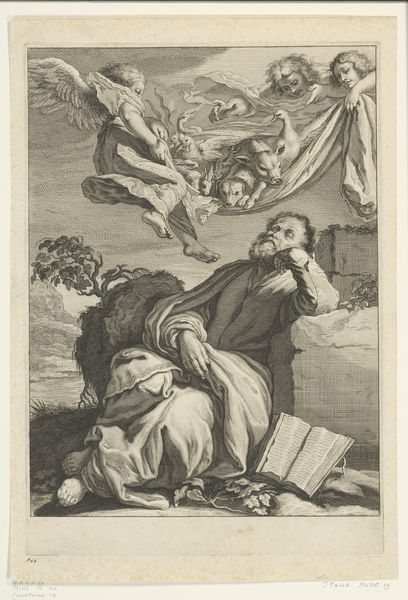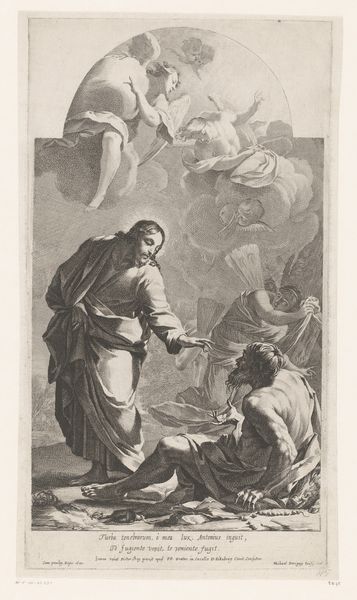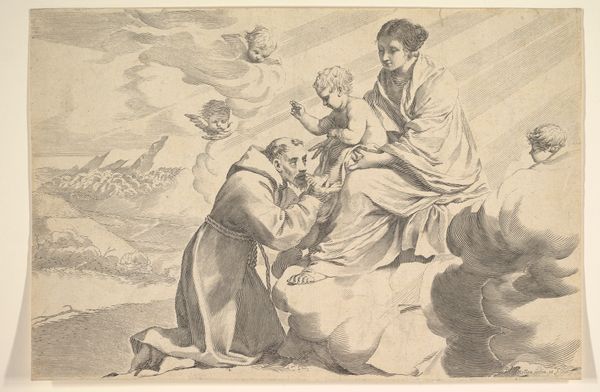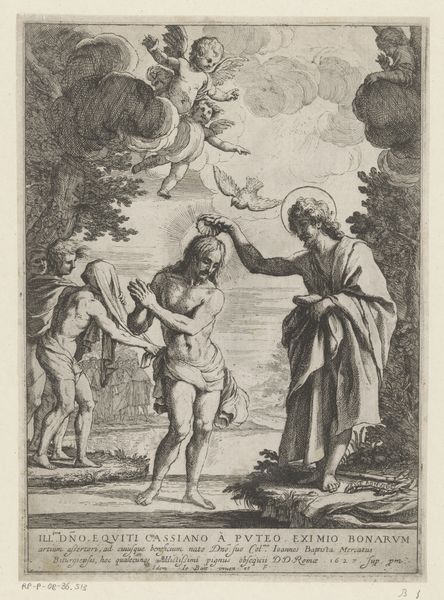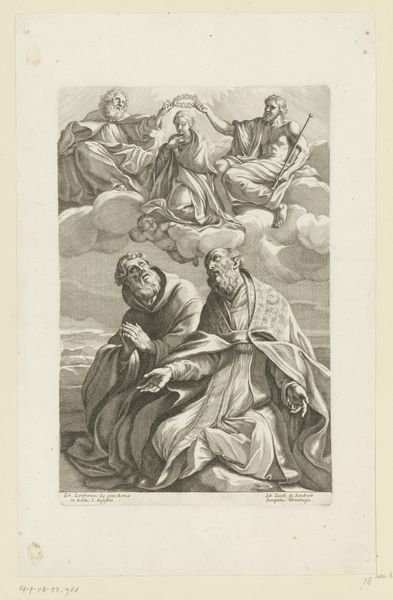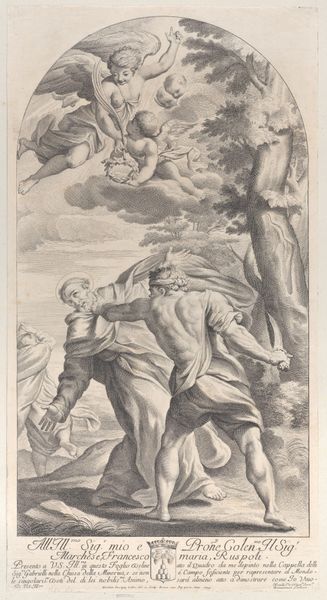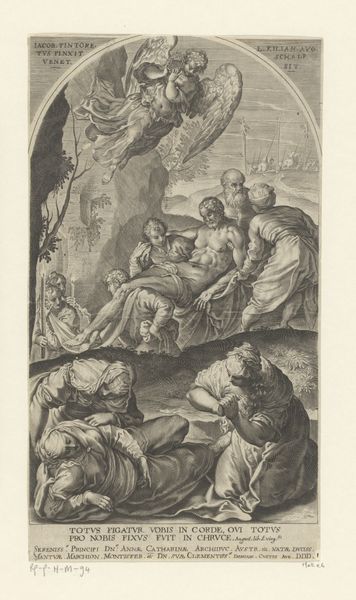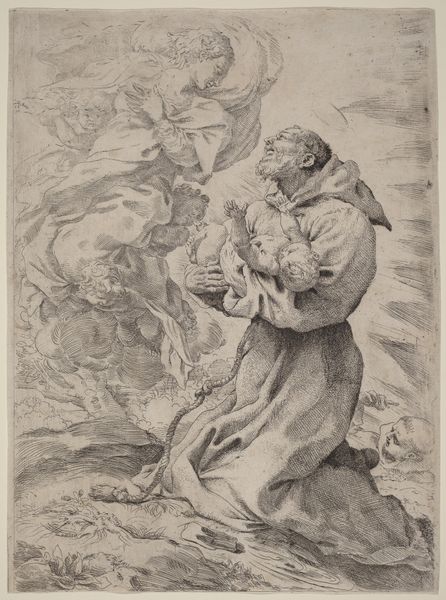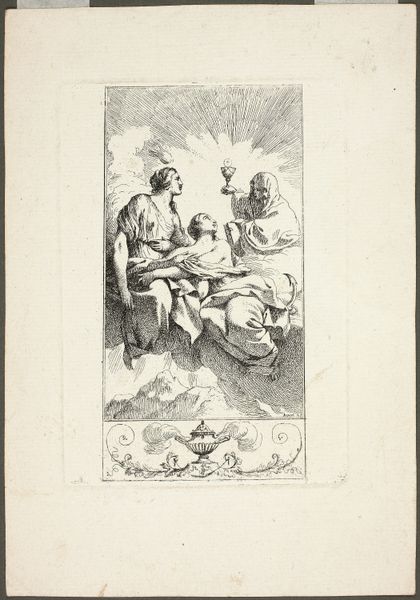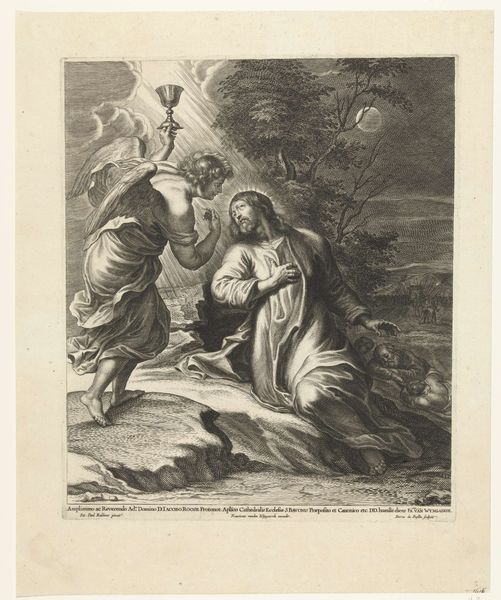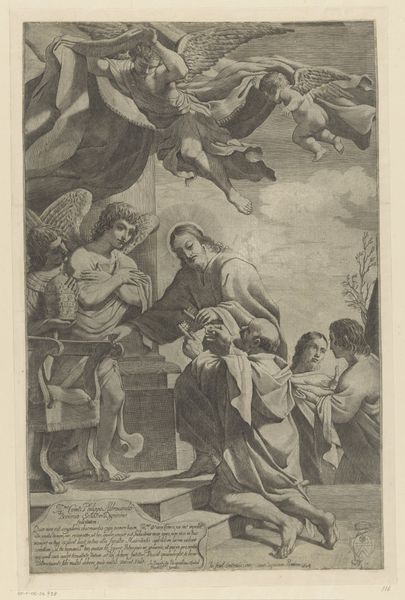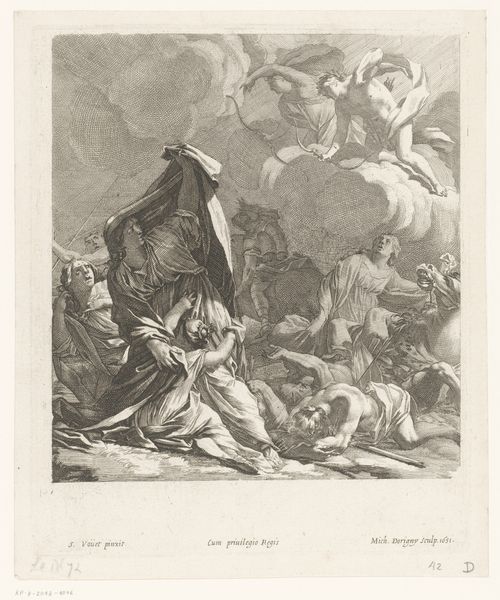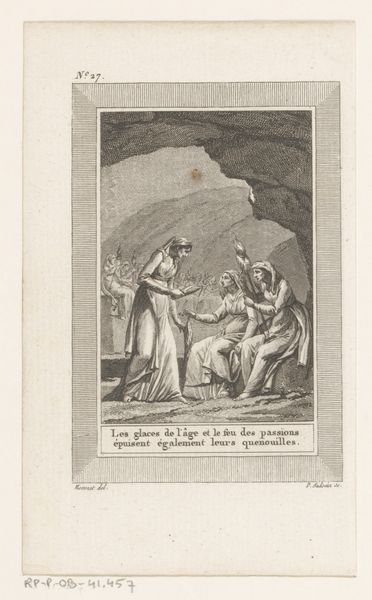
Maria op wolken kijkt neer op bedelmonnik met het Kind in zijn armen 1608 - 1688
0:00
0:00
claudemellan
Rijksmuseum
engraving
#
baroque
#
old engraving style
#
caricature
#
figuration
#
line
#
history-painting
#
engraving
Dimensions: height 266 mm, width 200 mm
Copyright: Rijks Museum: Open Domain
Curator: What strikes me first is the starkness, the austerity evoked by this engraving; a devotional image articulated purely through line. Editor: This is "Maria op wolken kijkt neer op bedelmonnik met het Kind in zijn armen," an engraving created sometime between 1608 and 1688. We attribute it to Claude Mellan. Its location at the Rijksmuseum provides a keyhole view into Baroque attitudes and beliefs. Curator: Indeed. Mellan masterfully uses the linear technique to depict the Virgin Mary, attended by angels, looking down upon a kneeling friar holding the Christ Child. Look how the light seems to emanate from the divine figures. The strict composition underscores the spiritual hierarchy, doesn't it? Mary aloft, monk prostrate... Editor: It certainly highlights the performative aspects of piety. The composition seems to mirror socio-religious dynamics of the period. One may ponder if Mellan subtly critiques power imbalances within religious institutions. Who is given the real grace or perceived grace, in these types of narrative settings, becomes important in understanding cultural priorities of the time. Curator: An intriguing observation. I find myself drawn to the rendering of textures – the soft clouds contrasting with the crisp folds of the monk’s habit, achieved purely through the density and direction of lines. Semiotically, line becomes a signifier of difference, a powerful expressive tool, you see. Editor: Agreed. However, this piece could easily be used to promote acceptance and normalization of inequitable practices. It seems to me the artist is trying to get the public to reflect on what they deem important, especially between social classes. Curator: Well, that perspective asks whether the viewer's subjective lens impacts reception... Are we then imposing modern concerns onto historical artistry? It is difficult not to at times, as meaning does shift throughout the decades. Editor: Perhaps both readings are valid. This artwork, as it reflects specific social conditions, invites scrutiny through modern interpretative methods. Thank you for speaking about Claude Mellan's piece today! Curator: A pleasure as always. Looking forward to our next analysis.
Comments
No comments
Be the first to comment and join the conversation on the ultimate creative platform.
